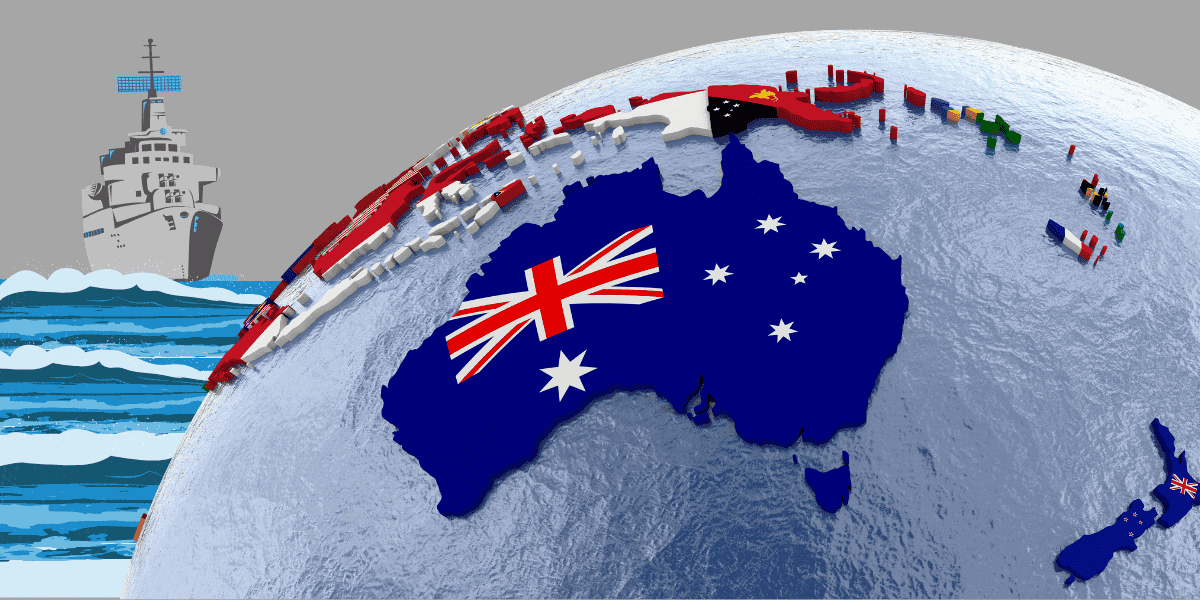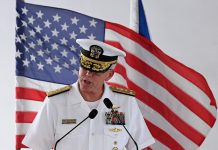Australia will acquire 11 Mogami-class frigates from Japan’s Mitsubishi Heavy Industries to enhance its navy, according to Defence Minister Richard Marles.
Described as Japan’s largest defense export deal since World War II, the $6.5 billion (A$10 billion) agreement will span the next decade.
This acquisition is part of Australia’s significant military overhaul, aimed at strengthening its naval capabilities with long-range firepower to counter China. The country plans to grow its major warship fleet from 11 to 26 over the next 10 years.
“This is clearly the biggest defence-industry agreement that has ever been struck between Japan and Australia,” Marles said, touting the deal.
“This decision was made based on what was the best capability for Australia,” he added.
“We do have a very close strategic alignment with Japan.”
Mitsubishi Heavy Industries was awarded the tender over Germany’s ThyssenKrupp Marine Systems (TKMS).
Mogami-class warships are advanced stealth frigates equipped with a potent array of weapons. Marles said they would replace Australia’s ageing fleet of Anzac-class vessels with the first Mogami-class ship to be commissioned by 2030.
“The Mogami-class frigate is the best frigate for Australia,” said Marles.
“It is a next-generation vessel. It is stealthy. It has 32 vertical launch cells capable of launching long-range missiles.”
The deal further cements a burgeoning security partnership between Australia and Japan.
Japan is deepening cooperation with US allies in the Asia-Pacific region that, like Tokyo, are involved in territorial disputes with China.
Both Japan and Australia are members of the “Quad” group alongside India and the United States.
Japanese government spokesman Yoshimasa Hayashi said Tuesday the deal was “proof of trust in our nation’s high-level technology and the importance of interoperability between Japan’s self-defence forces and the Australian military.”
It was also a “big step toward elevating the national security cooperation with Australia, which is our special strategic partner”, Hayashi told reporters in Tokyo.
Japan’s pacifist constitution restricts it from exporting weapons — but in 2024, Tokyo loosened arms export controls to enable it to boost sales abroad.
The order is Japan’s biggest defence export deal since World War II, according to local media.
Defence industry minister Pat Conroy said the Mogami-class frigates were capable of launching long-range Tomahawk cruise missiles.
“The acquisition of these stealth frigates will make our navy a bigger navy, and a more lethal navy,” he said.
The first three Mogami-class frigates will be built overseas, Conroy said, with shipbuilding yards in Western Australia expected to produce the rest.
Australia announced a deal to acquire US-designed nuclear-powered submarines in 2021, scrapping a years-long plan to develop non-nuclear subs from France.
Under the tripartite AUKUS pact with the United States and the United Kingdom, the Australian Navy plans to acquire at least three Virginia-class submarines within 15 years.
The AUKUS submarine programme alone could cost the country up to US$235 billion over the next 30 years, according to Australian government forecasts, a price tag that has stoked criticism.
Major defence projects in Australia have long suffered from cost overruns, government U-turns, policy changes, and project plans that prioritize local job creation over defence.
Australia plans to gradually increase its defence spending to 2.4 percent of gross domestic product — above the 2 percent target set by its NATO allies, but well short of US demands for 3.5 percent.

Revival Of Australia’s Naval Might
Australia’s addition of more surface combatants is based on the Defense Strategy Review (DSR) 2023 findings. The review painted a very abysmal picture of the country’s naval capability, warning that the RAN required a better assortment of warships to project power in the contested Indo-Pacific.
The DSR ordered an Independent Analysis Team (IAT) to determine the ideal surface force composition, size, and structure. The IAT concluded that instead of buying twelve ‘Tier-1’ combatants (Hobart-class guided missile destroyers and nine Hunter-class frigates), the RAN should purchase nine Tier-1 warships and eleven Tier-2 general-purpose frigates.
Based on the DSR and suggestions made by the analysis team, the Australian government unveiled an ambitious ten-year plan in February this year to double the number of major warships in its fleet from 11 to 26 and hike defense spending by an additional US$11.1 billion over the period.
At the time, Australian Defense Minister Richard Marles said, “It is the largest fleet that we will have since the end of the Second World War.”
Explaining the strategic advantage of the GPF, Rear Admiral Sanjoy Roye (retd) recently said, “These vessels would add a lower-end combatant capability to the future RAN fleet mix. They will serve as a replacement for the eight 1990s-legacy ANZAC-class multirole frigates.”
“During the acquisition of these ships, a to-be-determined number of ANZAC frigates will be put through a planned Transition Capability Assurance Program (TransCAP) upgrade to their undersea warfare and multi-domain strike capabilities,” he added.

As per the plan unveiled by the Australian Defense, the planned Hunter-class frigate fleet has been reduced from nine to six vessels.
The plan further states that the Navy would acquire six large “optionally crewed” surface ships to build a fleet of “enhanced lethality surface combatants.” These uncrewed vessels will be equipped with long-strike missiles and are being developed in partnership with the United States. According to reports, each ship will contain 32 Vertical Launch Missile System (VLS) cells.
As the Australian Defence Force attempts to advance further into the Pacific, the ANZAC-class frigates and Hobart-class destroyers will also be equipped with more anti-ship and long-range missiles. This means replacing Harpoon anti-ship missiles with naval attack missiles and adding Tomahawks for increased range.
Some analysts have labeled this naval modernization “Australia’s naval renaissance.” While Australia did not name the country that represented the biggest threat to security, the DSR made many veiled references to China.
For instance, it described China’s military build-up as the “largest and most ambitious of any country since the end of the Second World War.”
- Via: ET Desk
- With AFP Inputs
- Mail us at editor (at) eurasiantimes.com




